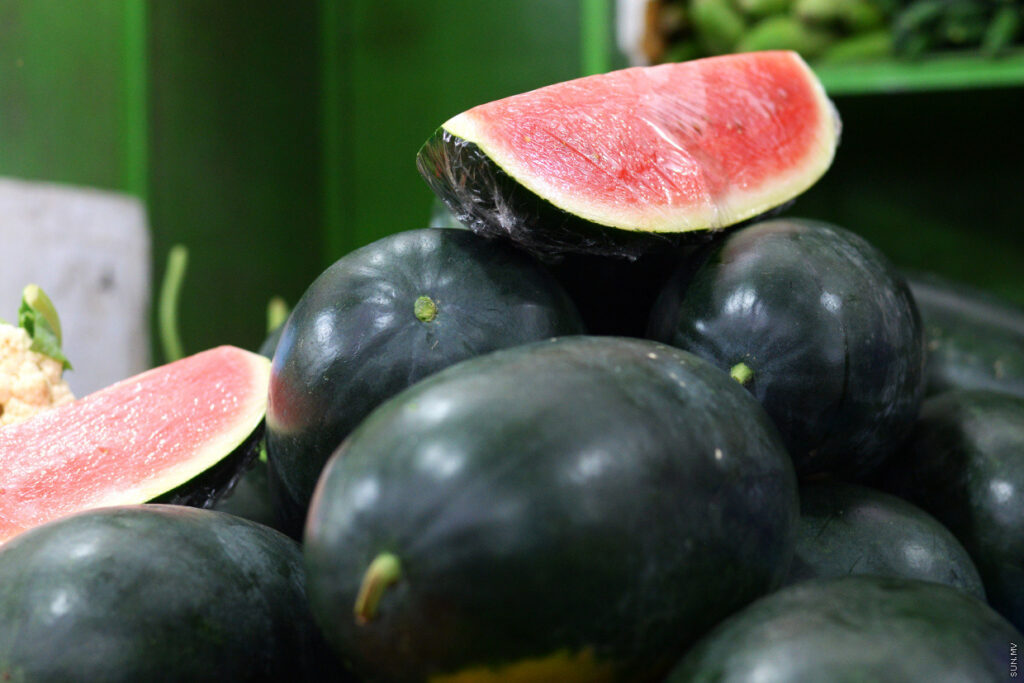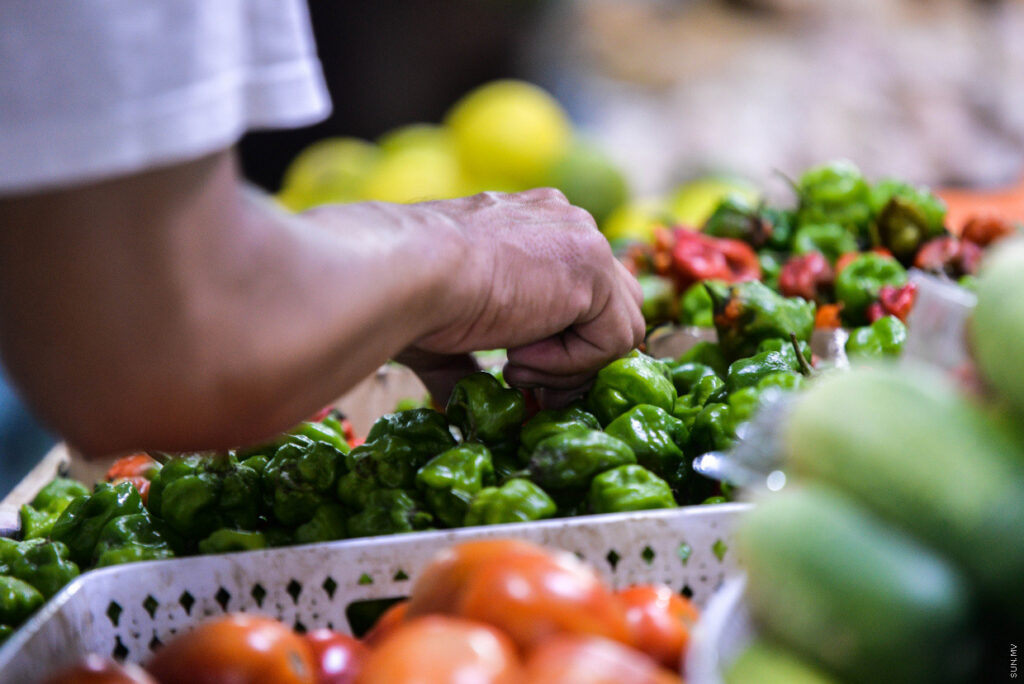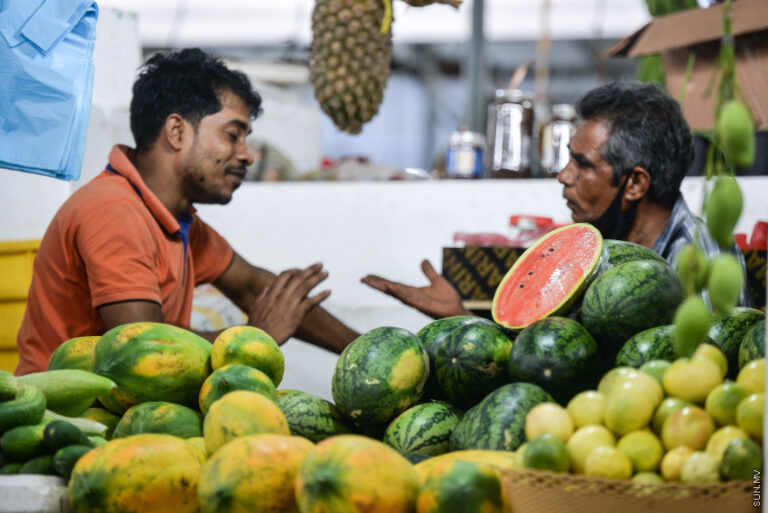A local media, in the local language, had an article dated on March 22, 2025 that said the Maldivian fresh produce market observed a steep decline of watermelon availability, surging the price on the commodity for the first time during this year’s Ramadan.
Vendors report a kilogram of fresh watermelon was sold for MVR 30 currently, which an MVR 10 increment from the start of the Islamic holy month; a steep increment considering the strong demand. Vendors also highlight the relative disruption to the supply-demand chain as watermelon’s availability for sale has plummeted significantly.
Alif Alif atoll Thoddhoo is the largest watermelon producer locally. A couple of other islands produce the fruit in large quantities as well. All of these islands transform into the largest domestic ‘exporters’ of watermelon to Greater Male’ area and other parts ahead and amid Ramadan.
The situation however, appears to be in plight now as the availability of watermelon from these islands has gone down between scarcity and complete non-availability.
Vendors are now speculating on the possible non-availability of the most in-demand fruit during Ramadan, for the remaining few days of said month.
Besides this, local vendors had also reported a significant decline in their earnings during this year’s Ramadan compared to previous years. On average, fresh produce sellers made a daily revenue of MVR 30,000; which has gone down to MVR 4,000.
Beyond the most heavily sold fruit, other items have observed notable price bumps during Ramadan. Fresh chili produced from Kandoodhoo is sold at MVR 160 per kilogram, while smaller chilis are sold around MVR 120 per kilogram. Price of chili had surged between MVR 200 and MVR 250 per kilogram earlier during the current Hijri-calendar month.

Another major fruit that observes sharp incline in price during Ramadan is passionfruit, which is currently sold at MVR 150 per kilogram. Previously the price on this had been between MVR 120 and MVR 130 per kilogram.
Maintaining prices on all the top-selling items comes as an advantage for consumers; however, the same cannot be said for the vendors and sellers, who are observing sharp decline in their daily and monthly earnings compared to the previous years. However, the concept of supply and demand cites that at any given time; one side of the spectrum would have it in their favor.
The issue however, in this instance, is the state-controlled prices on these items.
Implications on Retailers and Wholesalers/Vendors
According to the government, State Trading Organization (STO) – the country’s largest state-owned enterprise – had been at the forefront of importing the major commodities and introduce them to Maldivian markets to maintain prices. While this appears virtuous, and could provide short-term benefits for the consumers, it could also create an imbalance not favoring the businesses that are involved in the trade of these commodities.
For instance, if the government is forcing prices of vegetables and fruits to be kept within specific ranges; it could impose several disadvantages on retailers and wholesalers.
The primary issue would be reduced profit margins for businesses, and it would limit the ability of retailers and wholesalers to adjust prices based on market conditions, potentially squeezing their profit margins. If prices are set artificially low, the demand may exceed supply, which in turn could lead to shortages – and perhaps appears to be case with the Maldivian markets currently, especially regarding watermelon.
Watermelon produce from Thoddoo is considered top-tier in the domestic market, but the current disruption to the supply chain; vendors would now be required to look elsewhere to acquire the fruit and have it sold to end customers. This could mean that businesses may now import cheaper or low-quality watermelon, that could in turn affect profitability of the businesses.
Short-term benefits for farmers
Price floors can ensure farmers a minimum price for their produce which could protect them from market fluctuations. Moreover, limiting price volatility could further enhance farmers to have more predictable income streams. But these are mostly short-lived benefits, that could, eventually lead to unintended end results.
Long-term consequences
Though farmers may see short-term benefits, government-controlled price mechanisms may not prove profitable for both the farmers and businesses in the long run.

Price controls for instance, could discourage farmers from investing in new technologies or improving efficiency as they are guaranteed a set price regardless of quality or productivity. On the other hand, if the prices are set too high, farmers may overproduce that could lead to surpluses, which the government will then be required to purchase and store – in this case, STO may step in to mitigate such a scenario; but that could result in the enterprise having to eventually discard the produce when the demand on them eventually dies down. This could result in STO bearing losses as having to write-off the unsold and spoilt perishables.
Furthermore, price controls could interfere with the natural supply and demand dynamics that could hamper the efficiency of resource allocation.
Historical Context
In the 1970s, the United States government implemented price controls on gasoline which led to shortages as the demand rose, and resulted in long queues at gas stations. Another example is Venezuela, where the government maintained strict price controls on food items, including fruits and vegetables that led to severe shortages and the emergence of commodity black markets.
Taking an example close to home, in India, the government’s minimum support price (MSP) for certain crops has led to overproduction of some commodities and underproduction of others; which has resulted in distortions in agricultural markets.
Bottom line
The advantages of state-controlled prices on commodities appear limited in scope and scale; and mostly, in favor of just one end of the supply and demand dynamics whereas the disadvantages outweigh the positives, as the long-term consequences appear to have more significant impact on all the actors involved in the industry – including consumers, who could be facing scarcity of their most-wanted items.


